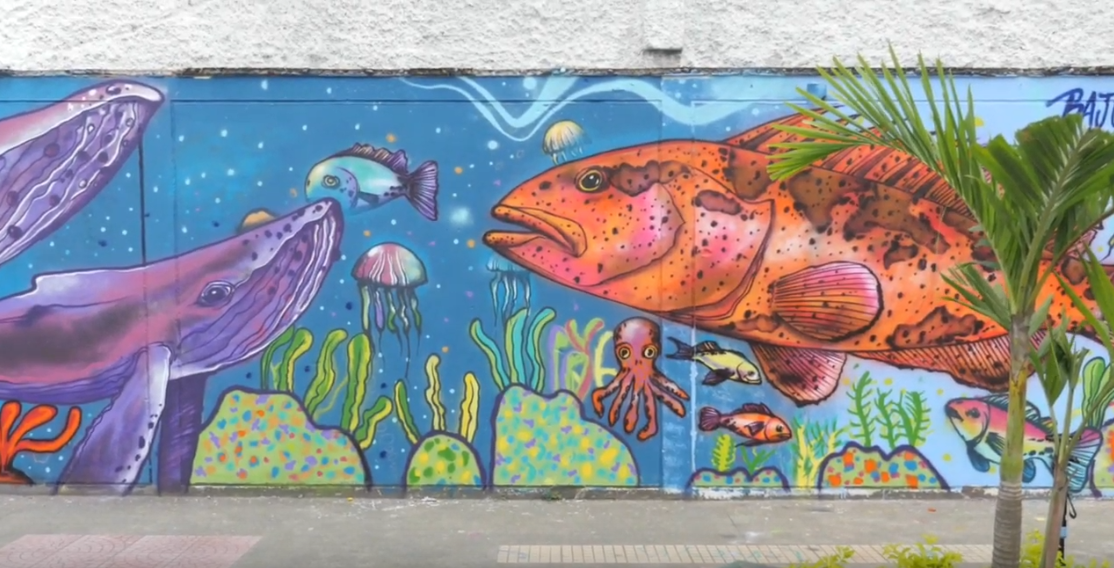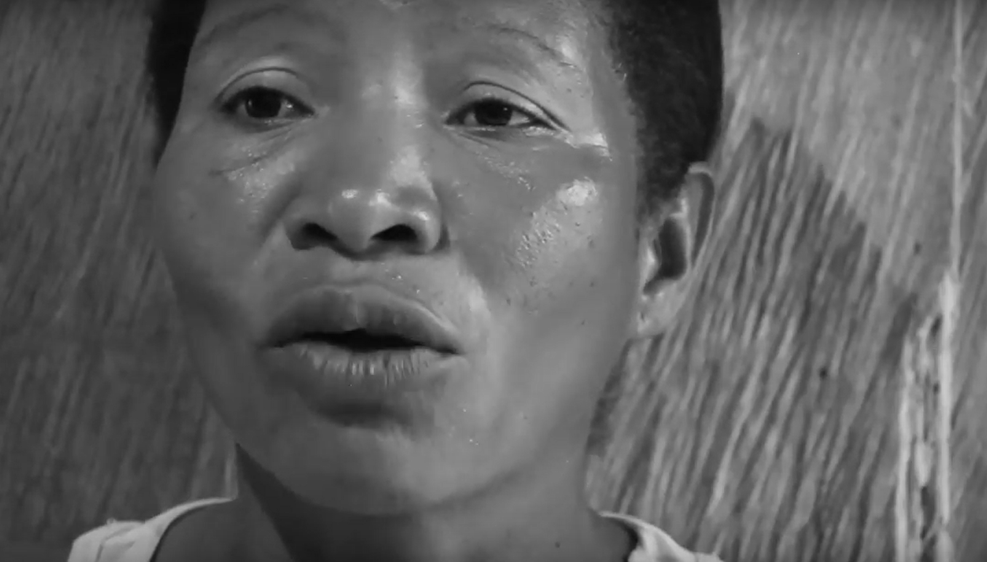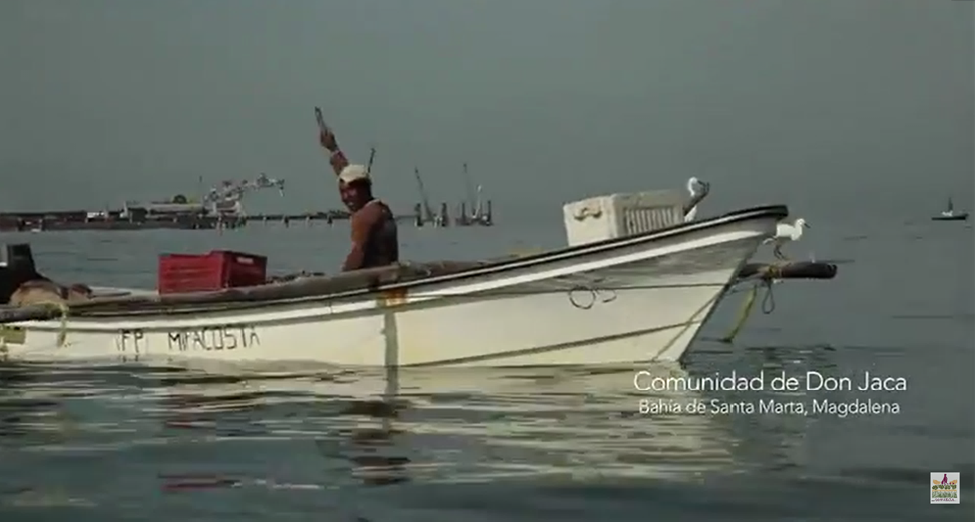What is the conflict?
Colombia as one of the countries with the highest fish diversity worldwide. Yet, fisheries suffer pressures both on the Caribbean and Pacific coastlines, most notably overexploitation, habitat destruction, and pollution. Poor fisheries management policies hit the fishing activity in both coasts, as lack of regulations or lack of enforcement of the existing regulations converge with insufficient surveillance and control. Meanwhile, fishery resources in inland waters suffer from the disproportionate growth of economic sectors such as mining, hydropower, and agroindustry.
Fishers from the traditional fishing village Taganga, in Santa Marta, Colombia, crossing a spill of palm oil. Visual media helps to document episodes like this that otherwise would remain unheard.
Photo by Alejandro Suarez | GISSBH, with permission
Why is this a special conflict?
Conflicts around small-scale fisheries are poorly systematised and understood despite their role in the governance of coastal and marine and freshwater ecosystems. Existing studies come up against the need to ensure interdisciplinary integration of the socio-ecological processes involved in fisheries management. The study of sensitive issues such as violence against fishing communities, corruption, or environmental crimes is not easy. Scientific research and advocacy on these topics requires building trust with fishers so as to gain an accurate picture of relevant intra-community processes and values. At the same time fishers are one more case of engagement fatigue, after recurrent research interventions through interviews, questionnaires, or focus groups. Initiatives of ecological research and community support are turning to innovative and creative tools for the analysis and dissemination of socioecological knowledge.
Thinking collectively about marine small-scale fishing in Colombia, AUNAP-MINAGRICULTURA, Squalus Fundation, GIEEP Research Group, GISSBH Research Group.
Films are part of the toolkit of joint initiatives between fishers and institutions combining traditional knowledge and sustainable management.
What is the role of art in this case?
We examined visual media, mainly films produced in conflics over small-fisheries, and observed how different groups converged in their use of the films in the last few years. A first group unites indigenous people and local communities, academia (both researchers and students), and the media. They tend to use films to denounce the pressures and impacts suffered by the small-scale fisheres, attract public attention, and make the conflicts visible. Awareness raising and education are among the most important pursuits of this group, which also emphasise cultural aspects linked to dentity and memory in fisheries management. The second group connects conservation NGOs, fisheries authorities and production companies. They employ films for dissemination purposes, with a strong artistic and aesthetic angle, and the aim of promoting environmental values and spreading a discourse of empowerment. In the third group, faith communities aim at creating evidence by systematising facts in the films, giving hope, and engaging the community with conservation practices. Interestingly enough, the third group seemed to be the one emphasising science dissemination the most.
Compiling all the different purposes, in Colombia films about conflicts over small-scale fisheries contribute to:
Knowledge sharing, involving the purposes of dissemination (including science dissemination), awareness raising, education, and attracting public attention on facts about the conflict. This broad category encompasses knowledge creation by systematising or documenting experiences, e.g., of success stories of SSF management, or a baseline of evidence in underreported cases of conflict.
Persuasion and political mobilisation. Starting from a claim or complaint, the users aim at increased visibility of the conflicts, and social mobilisation, empowerment, community engagement (for instance, in conservation practices) and alliance formation.
Social functioning purposes including artistic /aesthetic expression, culturalvalorisation, consolidation of identity and memory, promoting environmental values such as the respect for nature, and giving hope to communities under pressure. Across the different purposes, the main target of the films is the general public, followed by the local communities, and decision makers (mainly governmental institutions). Researchers are also a target audience, albeit minor.
Chain Effects of Using Films in Fishing Conflicts. Accessed from Rodriguez-Labajos, Saveedra-Díaz and Botto-Barrios, 2021.
For more information
Check out the documentaries on fishers by the grup Cromatophoro, the transmedia project ‘Guardians of the Magdalena gold’ by the group Ictiología y Cultura (Ichthyology and culture), and the video-clips on rap and graffitti with children and young adults [1, 2] by WWF-Colombia.
Also, follow updates on our social media and read our publication:
Filmmaking as a source of enhanced knowledge and transformation in conflicts over small-scale fisheries - The case of Colombia. A scientific paper published in the open access journal Ecology and Society, by Beatriz Rodriguez-Labajos, Lina M. Saavedra-Díaz and Darlin Botto-Barrios.






